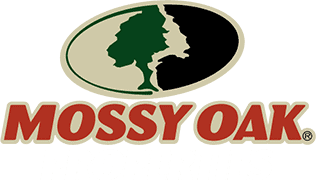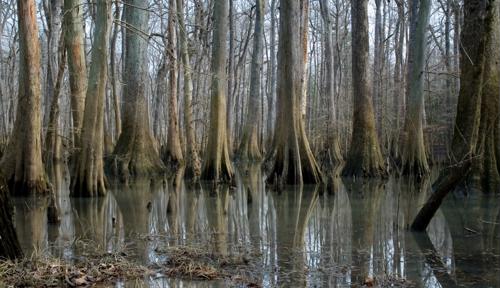The question of whether you can legally live on recreational land does not have a simple “yes” or “no” answer across the United States. While it is possible in some areas, most recreational land comes with significant legal hurdles to permanent residency. According to real-world experiences from landowners, the biggest challenges are not necessarily the zoning classifications, themselves, but rather the utility and infrastructure requirements that make a structure legally habitable. Let’s explore what you need to know before planning to live on land primarily intended for recreation.
Water, Waste, and Utilities: The Real Roadblocks
The Critical Infrastructure Requirements
Water, electric, and waste disposal systems create the most significant challenges for those wanting to live on recreational land. Most counties require clean drinking water that meets local health standards for a building to be considered fit for occupancy, even if you own the property outright.
A septic system or other approved waste management solution is almost always required for legal permanent residency. While composting toilets are gaining acceptance in some areas, many counties still demand traditional septic systems that can cost $5,000-$15,000 to install and require suitable soil conditions.
These basic infrastructure requirements exist for health and safety reasons, but they can make simple living on recreational land much more complex and expensive than many buyers initially expect.
Off-Grid Possibilities
The good news is that these requirements do not necessarily mean you need to connect to public utilities. Many rural areas allow off-grid solutions, provided they meet health and safety standards. Solar power systems, properly constructed wells, and approved alternative waste management systems can satisfy requirements in many jurisdictions.
The most flexibility exists in truly rural areas with very low population density, where off-grid living might be the only practical option anyway. These areas often have regulations that accommodate alternative living arrangements while still protecting public health.
Local Research Is Essential
Check Local Codes Before Buying
The most important step when considering living on recreational land is to thoroughly research local regulations before purchasing. Generalizing about what is allowed simply does not work because rules vary dramatically between jurisdictions.
Before buying recreational land with plans to live on it, you should:
- Review city and county websites for zoning and development codes
- Understand requirements for a legal residence in that specific area
- Research regulations about accessory buildings
- Find out how long you are allowed to camp on your property
- Learn about requirements for septic, water, and power systems
These codes are sometimes lengthy but usually straightforward to understand. Taking the time to read them can save tremendous headaches later.
Visit Planning Departments
Visiting county offices in person often provides insights not readily apparent from reading codes online. The staff in land use and planning departments can typically clarify gray areas and provide examples of what has or has not been approved in the past.
These conversations can be extremely valuable, especially since many regulations have unwritten interpretations or practical applications that are not obvious from the written codes. Building relationships with local officials can also prove helpful throughout the development process.
How Rules Get Enforced on Recreational Land
When Officials Take Action
Most counties only enforce recreational land rules in specific situations. Officials typically get involved when neighbors file complaints about your activities, when your use might harm protected natural areas, or when they notice unpermitted living during regular property checks.
The strictness of enforcement changes based on location. Remote areas with few neighbors generally have more relaxed oversight. More populated areas typically enforce rules more actively, sometimes using neighbor reports or even aerial photography to spot unauthorized buildings or people living on recreational land without proper permits.
Penalties for Unauthorized Living
Living on recreational land without meeting legal requirements carries serious consequences. Penalties often include:
- Forced removal of buildings or structures
- Daily fines that continue growing until issues are fixed
- Orders to stop using the property for any purpose
- Court appearances and legal costs
These penalties often cost much more than following the rules would have in the first place. One county might charge $100-500 per day for violations, quickly adding up to thousands of dollars. Another might require complete removal of non-compliant structures regardless of their cost to build.
This makes proper research and planning essential before attempting to live on recreational property. Knowing and following local requirements provides peace of mind and protects your investment for the long term.
Options for Living on Recreational Land
Temporary Stays and Camping
Most recreational properties allow temporary use throughout the year. County rules typically spell out exactly how long you can camp on your own land. This ranges widely by location – some counties limit stays to just 14 days at a time, while others might allow several months of camping per year. Many rural counties in states like Montana, Missouri, and Texas tend to have more generous camping allowances on private land.
For example, some counties permit unlimited weekend camping but restrict continuous stays to 30 days. Others allow 180 days of total occupancy spread throughout the year. Always check local codes, as these time limits are usually strictly defined and enforced.
Small Cabins and Hunting Structures
Many rural areas make a clear distinction between permanent homes and seasonal-use buildings. Hunting cabins, workshops, and small shelters typically face fewer regulations compared to primary residences. These structures often avoid requirements for full bathrooms, kitchens, or permanent heating systems that would apply to homes.
In many counties, structures under a certain size (often 200-400 square feet) qualify for simplified permitting. Some places allow these buildings with just a basic permit rather than full residential approval. This creates a legal path for having a comfortable shelter on your land even when permanent living isn’t permitted.
RV and Mobile Living Solutions
Using an RV or mobile home offers flexibility on recreational land. Many counties allow temporary RV living while you build a permanent structure. Typically, with a 6-24 month time limit tied to an active building permit. Some remote counties have minimal restrictions on RV use on private property.
Seasonal use of RVs follows different rules from permanent placement. For instance, parking an RV during hunting season or summer months usually faces few restrictions, but leaving it set up year-round might require permits or even a permanent foundation in some jurisdictions. The difference between occasional use and permanent placement makes a big difference in what is allowed.
Finding Recreational Land You Can Live On
- Look for Rural Areas with Minimal Restrictions – Rural counties with low population densities typically have less restrictive codes regarding land use. These areas understand the practical challenges of remote living and often create more flexible regulations.
- Seek Properties with Existing Infrastructure – Land that already has a well, septic system, or power connection will face fewer hurdles for occupancy approval. Even if these systems need upgrading, having them already in place simplifies the process significantly.
- Focus on Properties Zoned as “Rural Residential” – Land with mixed zoning designations like “rural residential” or “agricultural residential” often allows both recreational and living uses without rezoning. These properties bridge the gap between purely recreational and residential land.
- Research County Building Departments Before Searching – Some counties are known for being more accommodating to alternative living situations. Call building departments directly and ask about minimum structure requirements before focusing your search in a particular area.
- Consider Properties Near Small Towns – Land within a reasonable distance of small towns often has better access to utilities while maintaining fewer restrictions than suburban areas. This provides a good balance of convenience and flexibility.
- Work With Knowledgeable Land Specialists – Mossy Oak Properties helps buyers understand what is realistically possible on recreational properties. Our agents can guide you to areas where regulations better align with your goals, whether that means full-time living or extended seasonal stays.
The Bottom Line on Living on Recreational Land
Living full-time on recreational land is legally possible in many areas, but it requires careful research and planning. The key is understanding exactly what your local jurisdiction requires for legal occupancy and either meeting those requirements or finding property in an area with regulations that align with your plans.
The requirements for occupancy certification vary widely by location, and whether your structure meets those standards will determine if you can legally live there. By doing thorough research before purchasing, working with knowledgeable professionals, and understanding both the letter of the law and how it is typically enforced, you can make informed decisions about whether living on recreational land is a viable option for your situation.


